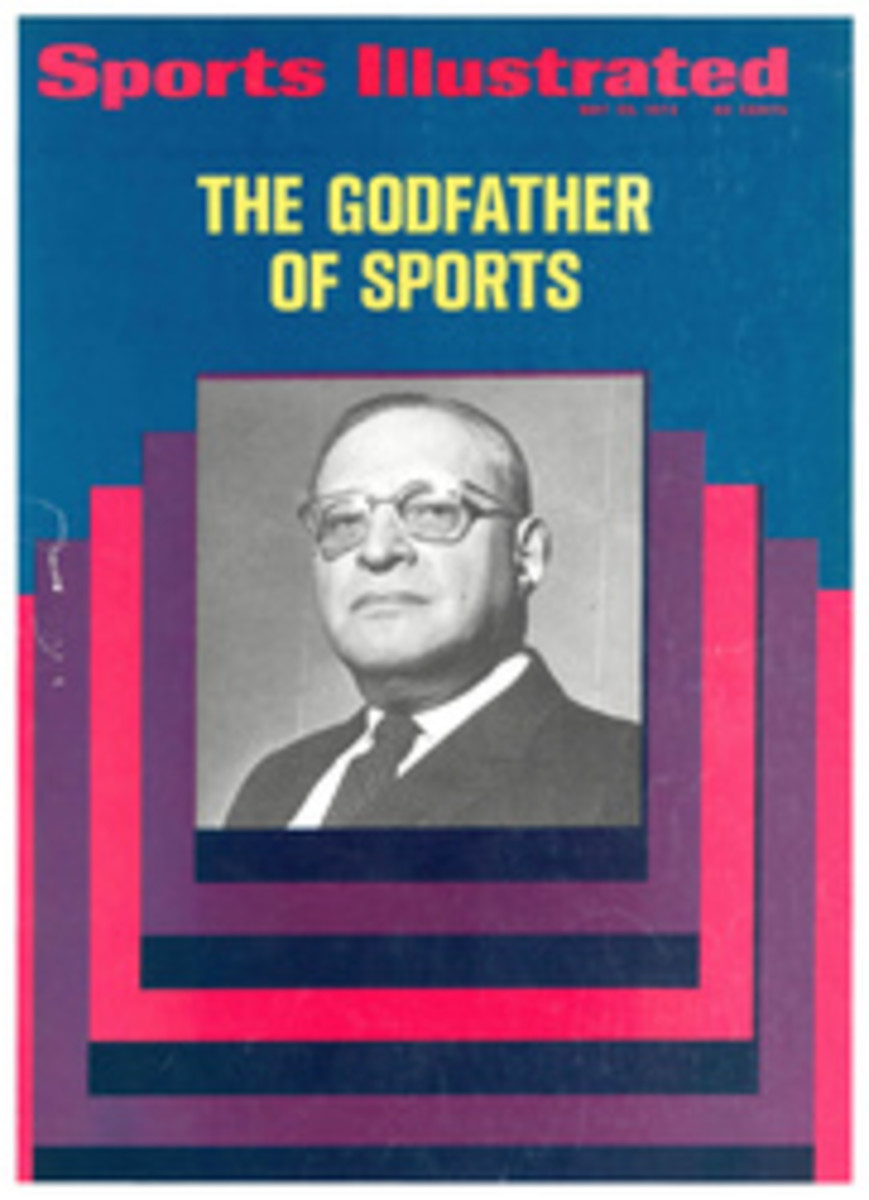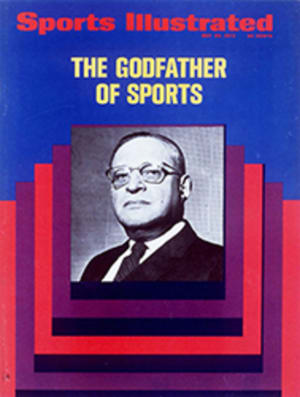
Padres are no longer patsies
The game has to be fun if you're going to be any good at it," Popeye says. And that's no spinach, particularly if the game you're talking about is baseball. His formula seems to work. In previous years the San Diego Padres tended to be as mournful of mien as those losers in Cleveland (page 38). But under new Manager Don Zimmer, San Diego can have a ball and hit it, too. Occasionally, at least. "Zimmer is a pup out of Charley Dressen," says President Buzzie Bavasi, who explains that he fired his gentlemanly former Manager Preston Gomez this spring because Gomez had allowed the lads to become infected with a gloomy, defeatist attitude.
The chubby Zimmer began by disposing of rules like those that required the Padres to wear ties on the road and arrive at the team bus three hours before game time and denied them beer on the team's air flights. That raised spirits. Good talent and maybe some good managing raised the Padres in the standings, all the way to the dizzying vistas of fourth place and a 15-18 record, grandeur indeed.
The Padres' new muscle has banished defeatism to some very distant place. "These guys can't wait to get to the ball park," said Pitcher Steve Arlin after a 5-3 Eastern swing. "It's kind of exciting to see what might happen next."
Arlin, who was the first to refer to his employers as Popeye's Padres, capsuled the prevailing attitude by gleefully anticipating a confrontation with the Dodgers' Don Sutton, just about the hottest pitcher in baseball. "So was Carlton when we beat him," Arlin says. "So was Seaver when we beat him."
Some people were saying that the pitcher with the best stuff in baseball right this minute is Clay Kirby, Arlin's teammate. Surely he is one of the least inhibited and least defeatist. The first pitch Clayton Laws Kirby Jr. ever threw to Willie Mays (in 1969) was a brush-back. Rookie Kirby had happened to overhear Pitching Coach Roger Craig say that dusters bothered Willie. Asked if he has ever been injured, Kirby says, "I broke my hand twice." Asked how, he replies, "By hitting people." Kirby was fourth in the National League in strikeouts last year with 231. In April he said, "This year I'll try to strike out every hitter I face. If they hit the ball, anything can happen."
Last year anything did. The Padres ranked 11th in the league in fielding. This season Kirby has 42 strikeouts already and only three teams have made fewer errors.
"Clay has a good fastball, a big slider, a little slider, a changeup, and now he's added a pitch that should help him against lefthanders—a knuckle curve," says Catcher Bob Barton.
Kirby says he threw a knuckle curve, the pitch that acquired fame when Cub Burt Hooton got his no-hitter with it, in high school. The Cardinals signed him and made him quit throwing it, fearing it would hurt his arm. That makes two mistakes by the Cardinals. The other came when General Manager Bing Devine happened to call Bavasi from Arkansas in 1968. Buzzie asked him what he was doing there, and Devine not quite offhandedly enough mentioned that he was looking at a kid pitcher named Kirby. Thus whetted, Bavasi eventually drafted him.
And then there is Nate Colbert, the major league home run leader, with nine. Colbert, it should be remembered, hit 89 homers in his first three full seasons. Willie Stargell hit only 59, Willie Mc-Covey 86 and Henry Aaron a mere 66.
"You have to remember, too, that Nate plays half his games in one of the toughest parks in the league for a power hitter," says Bob Skinner, not long ago a Pirate slugger and now an observant hitting coach. "The amazing thing about his power is that he has one of the most compact swings in baseball. He should get to where he hits 40 homers every year."
"Every time we make a mistake on him, he hits it out," says Catcher Jerry Grote of the Mets, against whom Colbert batted .436 last year.
More muchachos than padres last season, the San Diego club now has a number of players who have rather decisively come of age. Outfielder Leron Lee, who hit a very respectable .273 in 1971, ranks fifth among National League batters with a .358 average. Besides Arlin, with his glossy 1.86 earned run average, and Kirby, the Padres have gymnast Fred Norman, who used to do a backflip when he won, looking bright with a 1.62 ERA. It's a good thing the Padres do have Lee, Colbert and some pitching, however, since the team as a whole stands a bad last in the league in batting.
The new optimism has not yet extended to the box office. After drawing a pathetic 549,085 fans last year, the Padres—the only NL team under a million in attendance—began this season by attracting 196,389 for their first 19 dates.
"I don't see how you can make a major league city in three years," says Bavasi, defending the town. "It takes time. Baseball is not like football. You don't root for the club, you root for individuals. Up to this year there was nobody the fans could fling their hats at.
"I don't think you can condemn the town until a club wins more games than it loses and doesn't draw. No one can get rich running a ball club in San Diego, but we can make ends meet."
The rest of the league prays that they will. Walt Alston, who has made all the stops in baseball, says, "You get the sun, good air and good food."
And now, good baseball.
PHOTO
MANAGER DON ZIMMER CHASED GLOOM

